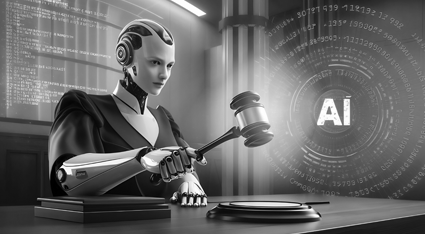Introduction
Digital transformation is no longer about migrating to the cloud or modernizing IT infrastructure—it’s about leveraging AI to drive business growth, improve decision-making, and automate complex processes. In 2025, enterprises that fail to adopt AI-driven transformation strategies risk becoming obsolete.
AI isn’t just a tool; it’s a strategic enabler that redefines how businesses operate. But integrating AI into an enterprise requires a structured approach, clear objectives, and the right technology stack.
Why AI is the Key to Digital Transformation
Enhancing Decision-Making with AI
AI enables enterprises to analyze vast datasets in real time, uncover patterns, and generate actionable insights. From predictive analytics to AI-driven forecasting, enterprises can make smarter, data-backed decisions faster than ever.
AI-Driven Automation & Efficiency
Enterprises can streamline workflows and eliminate repetitive tasks with AI-powered automation. From HR and finance to customer service and supply chain management, AI is driving efficiency across business functions.
Customer Experience Transformation
AI-driven chatbots, recommendation engines, and hyper-personalized experiences are changing how businesses interact with customers. Enterprises that leverage AI for customer engagement see higher retention and satisfaction rates.
The AI-Powered Digital Transformation Roadmap
Step 1: Define AI Objectives & Business Goals
Before implementing AI, enterprises must identify specific goals: Is the goal to improve operational efficiency? Enhance customer experiences? Reduce costs? Clear objectives ensure a well-structured AI adoption strategy.
Step 2: Assess AI Readiness & Data Maturity
AI relies on high-quality data. Enterprises need to evaluate their existing data infrastructure, governance policies, and integration capabilities before implementing AI solutions.
Step 3: Choose the Right AI Technologies
From machine learning and deep learning to natural language processing and AI-powered automation, enterprises must select the right AI tools tailored to their needs.
Step 4: Start with AI Pilots & Scale Gradually
Successful digital transformation doesn’t happen overnight. Enterprises should start with pilot AI projects, test the impact, and then scale solutions across the organization.
Step 5: Integrate AI with Existing Systems
AI must seamlessly integrate with existing enterprise systems, including CRM, ERP, and cloud infrastructure. This requires API-driven architecture and cloud-native solutions.
Step 6: Train Employees & Build an AI-First Culture
AI adoption is not just a technology shift—it’s a cultural shift. Enterprises must invest in AI training programs and encourage employees to embrace AI-driven workflows.
Step 7: Continuously Monitor & Optimize AI Models
AI models need continuous improvement. Enterprises must establish AI governance policies, monitor model performance, and optimize algorithms regularly to ensure accuracy and relevance.
Challenges in AI-Powered Digital Transformation
Resistance to AI Adoption
Employees and leadership teams may resist AI-driven changes. Clear communication and training programs are key to successful adoption.
Data Privacy & Security Concerns
Enterprises handling sensitive customer data must comply with global data privacy regulations and ensure AI models do not introduce security vulnerabilities.
Managing AI Bias & Ethics
AI models can inherit biases from historical data. Enterprises must ensure AI systems are transparent, fair, and ethically aligned with business values.
The Future is AI-Driven
AI-powered digital transformation is not an option—it’s a necessity. Enterprises that build structured AI roadmaps will experience higher efficiency, faster innovation, and better customer engagement.
The key to success is not just implementing AI, but integrating it seamlessly into business operations. Enterprises that embrace AI now will lead their industries in 2025 and beyond. The question isn’t whether AI should be adopted—it’s how fast enterprises can transform to stay ahead of the competition.







